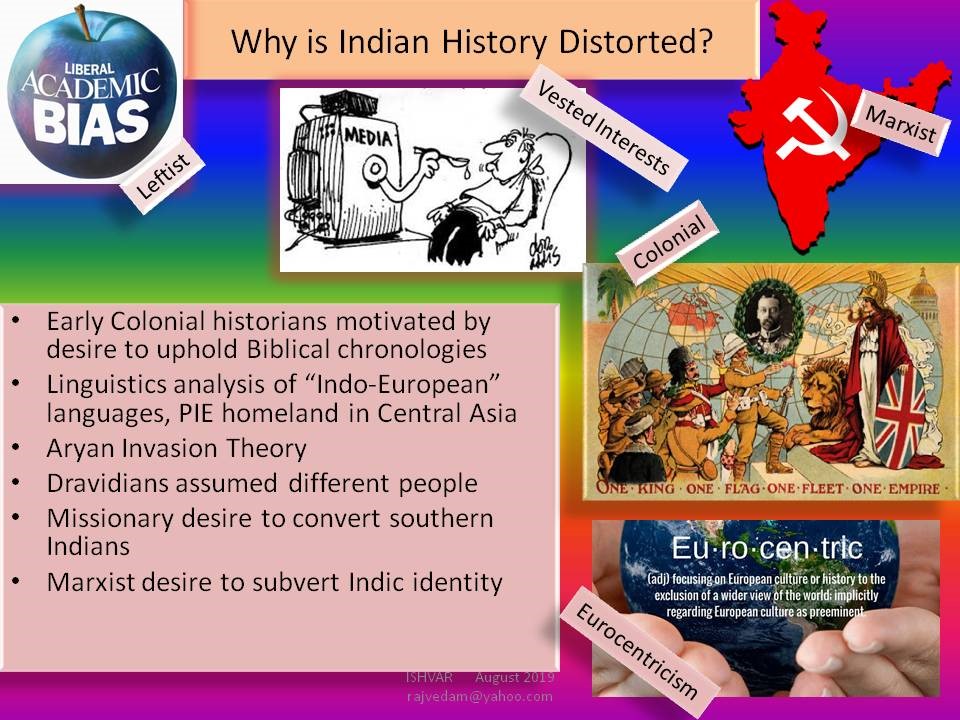
INDIA, September 7, 2019 (Indic Today by Aparna Sridhar): Dr. Raj Vedam participated in a session on “Unravelling the layers of History and Kavya” organized by the Center for Soft Power, Indic Academy and Heritage Trust, at Bangalore on August 31. He co-founded the think-tank, Indian History Awareness and Research, and to work on the Scientific Validation of Indian History.
How old is the Indian civilization? Academics identify “civilization” when a culture shows “urbanism” and has a script, implying diversification of professions and the ability to communicate knowledge to its present and future generations. David Frawley calls out the paradox of the Vedic people who show large literary works but with no archaeological record of urbanism, and Harappa which shows high urbanism but with apparently no literary works. The word “civilization” is thus applied rather narrowly in an academic sense. The facts are that there is great antiquity of the Indian people as attested by astronomical references in literary works, their long gestation with knowledge systems in a wide variety of areas, evidence of high thinking in the corpus of literary works, evidence of archeological finds in Bhiranna dating back 8,000 years, several finds in the Sindhu-Saraswati basin, and an interesting find of an underwater structure in Dwarka 8,500 years ago as all indicative of an advanced complex society, with an emphasis on the oral record rather than a written record.
If we admit these as indicative of “civilization,” then we have an Indian civilization from at least 10,000 years ago. If we insist on a written script, then Harappa would qualify for civilization status from 5000 years ago, though there are critics such as Witzel who claim that Harappa was an illiterate society by showing the paucity of literary records from Harappa that are lengthier than 10 signs. If we insist on a phonetic script encoding language such as Brahmi and urbanism then Magadha dating to 300 BCE would qualify for civilization.
Several forces inimical to the Indic civilization are responsible for the distortion of Indian history. The colonial Indologists tried to bring the chronology of the Indian king lists down to fit a Biblical chronology of creation at 4004 BCE which they subscribed to. They also engineered the distancing of Indians from their ancient educational systems, by alienating Indians from their own heritage with English education, placing them in awe of the Western world by a process of deep mind-colonization. The second inimical force was Eurocentric scholars of the 1800s who attempted to find a “linguistic homeland” for the “Indo-Aryans” in Central Asia, which led to the proposal of an “Aryan Invasion Theory,” and all of its attendant corollaries such as “Dravidianism.”
Obsequiously following Western gate-keepers of the colonial/Euro-centric Indian narrative, the liberal academic bias of present times constitutes the third inimical force. With their obligatory overuse of ill-fitting Western models such as post-modernism, feminism, subaltern studies as the only way to view all of Indian history. Several powerful vested interests ranging from international agencies, organized religions, opportunistic political parties to media have a strong desire to split the Indian nation by emphasizing maliciously manufactured fault-lines, and form the fourth inimical force on Indian history. The Marxists control the education sector in India and in conjunction with the works of their cohorts above, form the fifth inimical force and are the unchallenged gate-keepers of Indian history.
From the decimal number system mentioned in the Vedas to an enumeration of very large numbers, ancient Indians developed deep works in geometry, algebra, positional arithmetic, the concept of zero, trigonometry, spherical geometry, approximations of functions, solutions of equations and infinite series, the precursor of calculus. Astronomy was the main application that gave impetus for applied mathematics. Pythagoras is well-known to have come to India around 500 BCE and returned to Greece with a deep understanding of Vedanta, Indian mathematics that included the right-angled triangle theorem, and music. Pythagoras founded a Gurukulam style of school, advocated a vegetarian lifestyle, believed in reincarnation, and that the goal of life was to better oneself to merge with Brahman. His successors Socrates, Plato and Aristotle continued in the tradition of Pythagoras. Pythagoras is an important link in our understanding of the early transmission of knowledge from India to Greece.
Much more of this insightful article at “source”.
